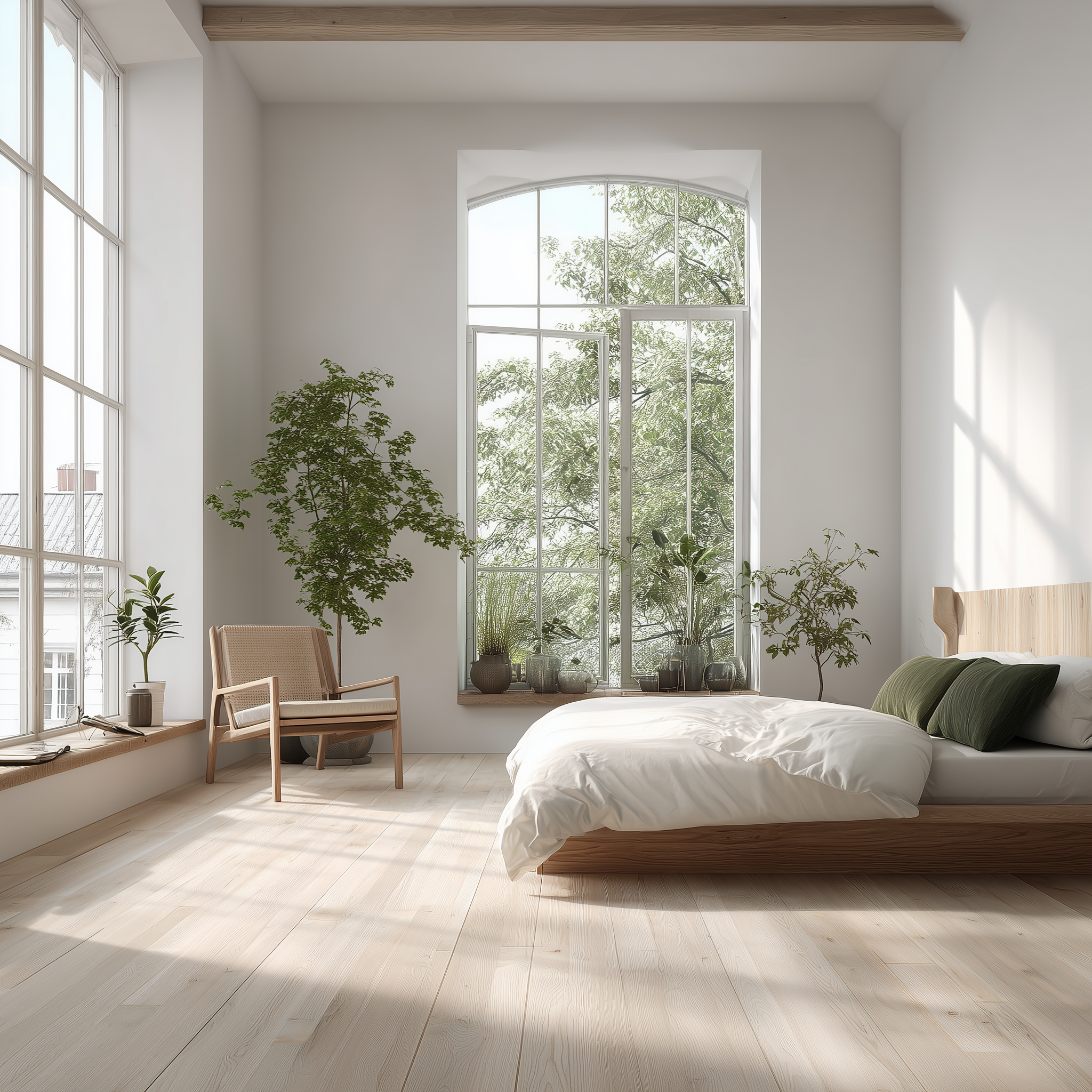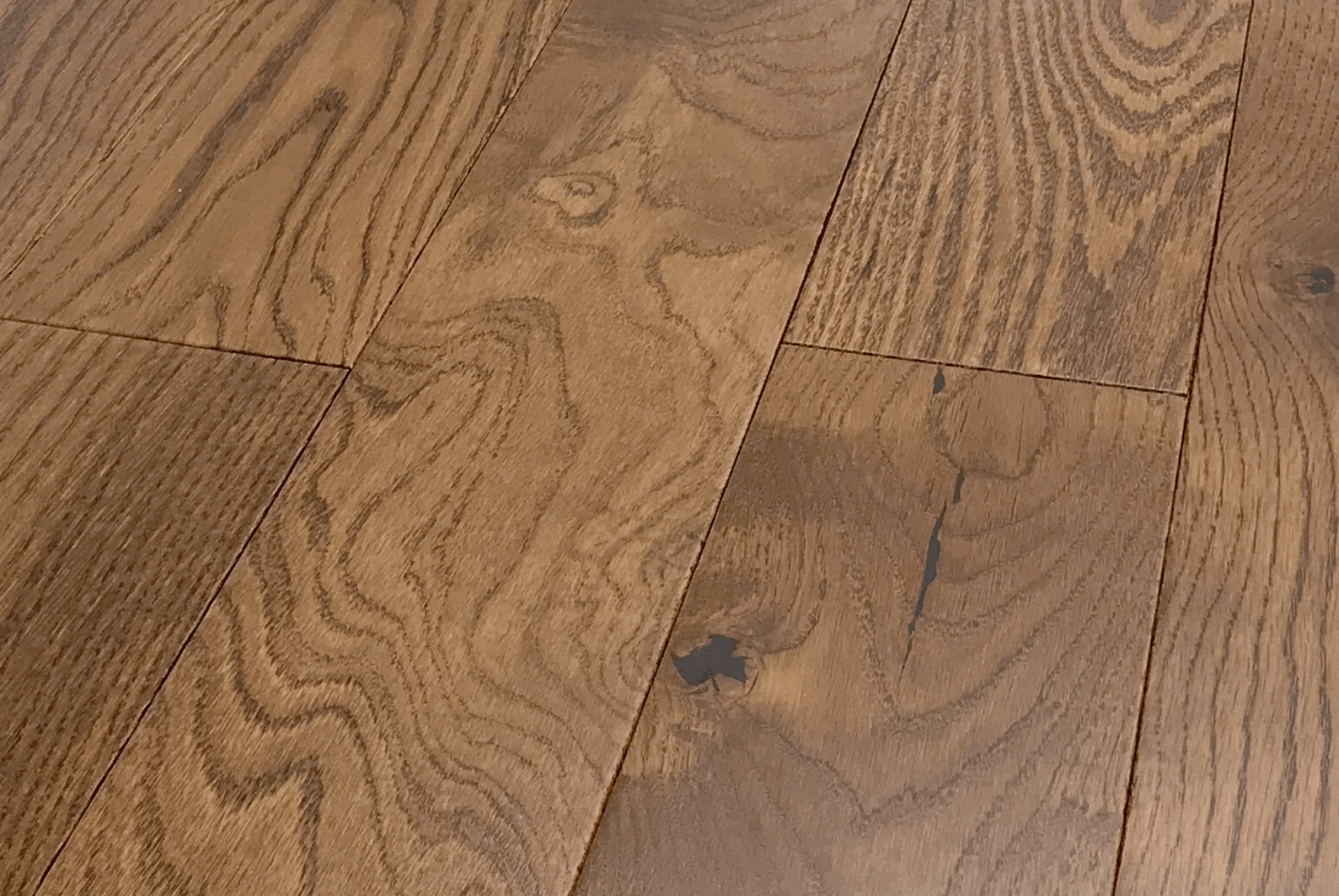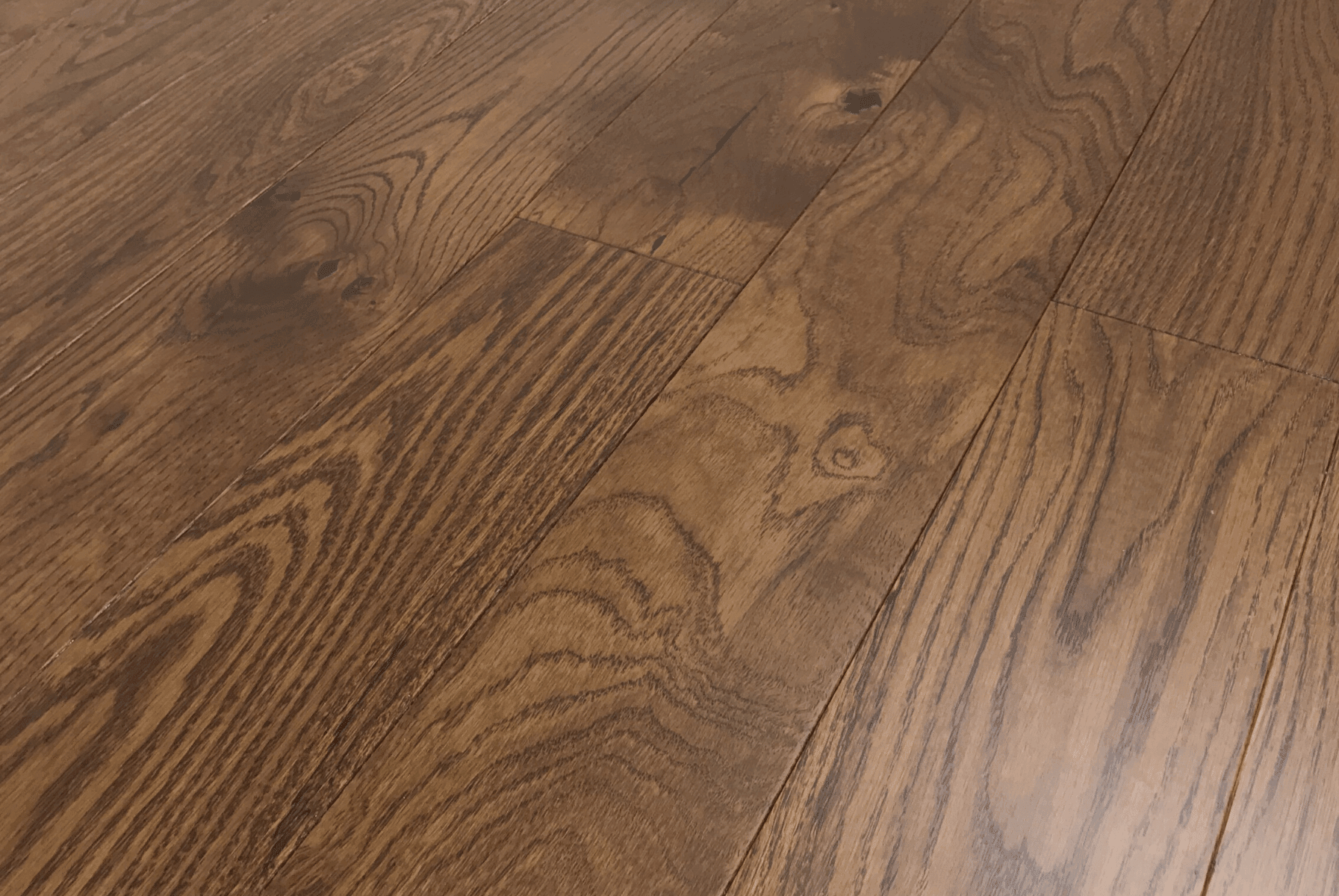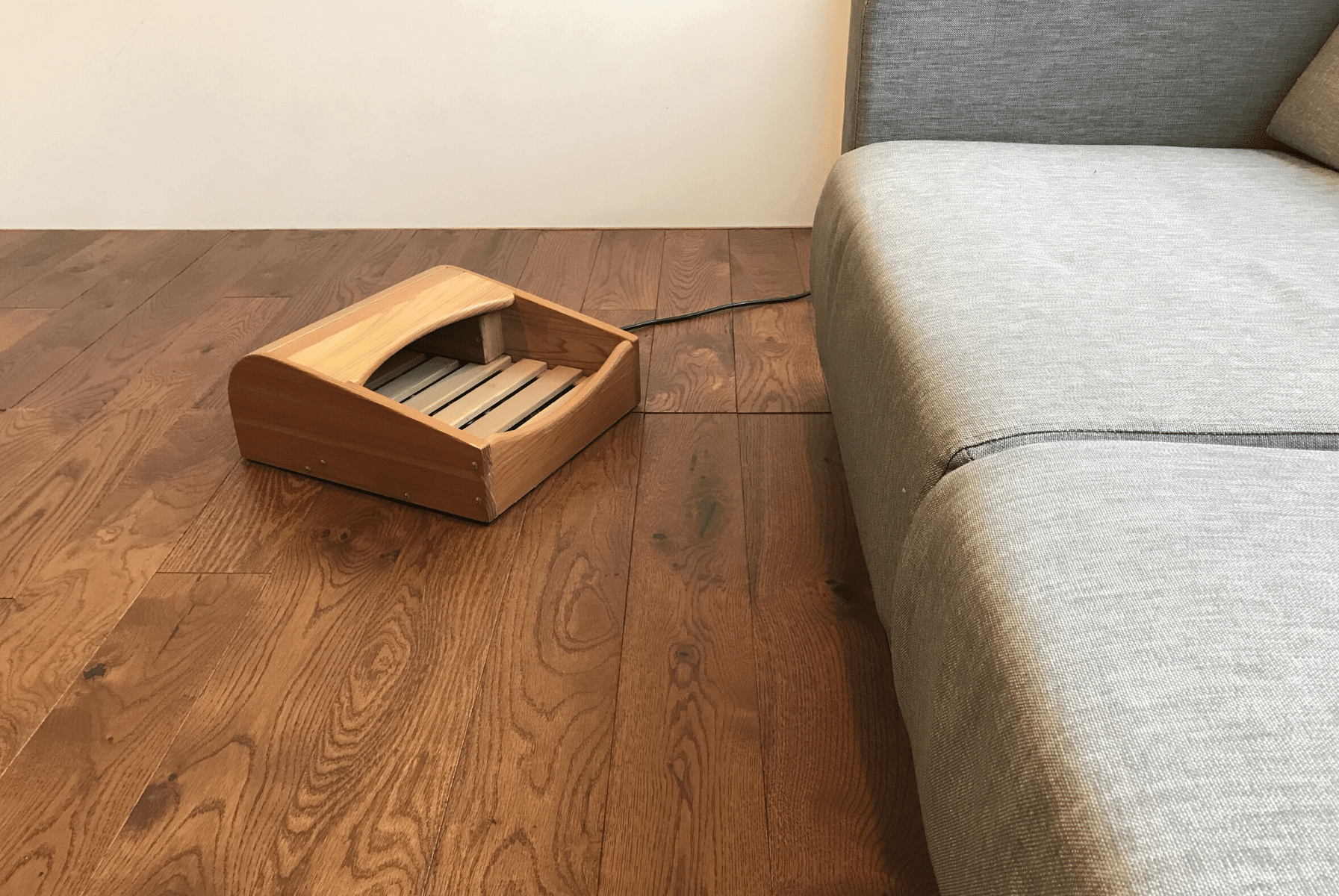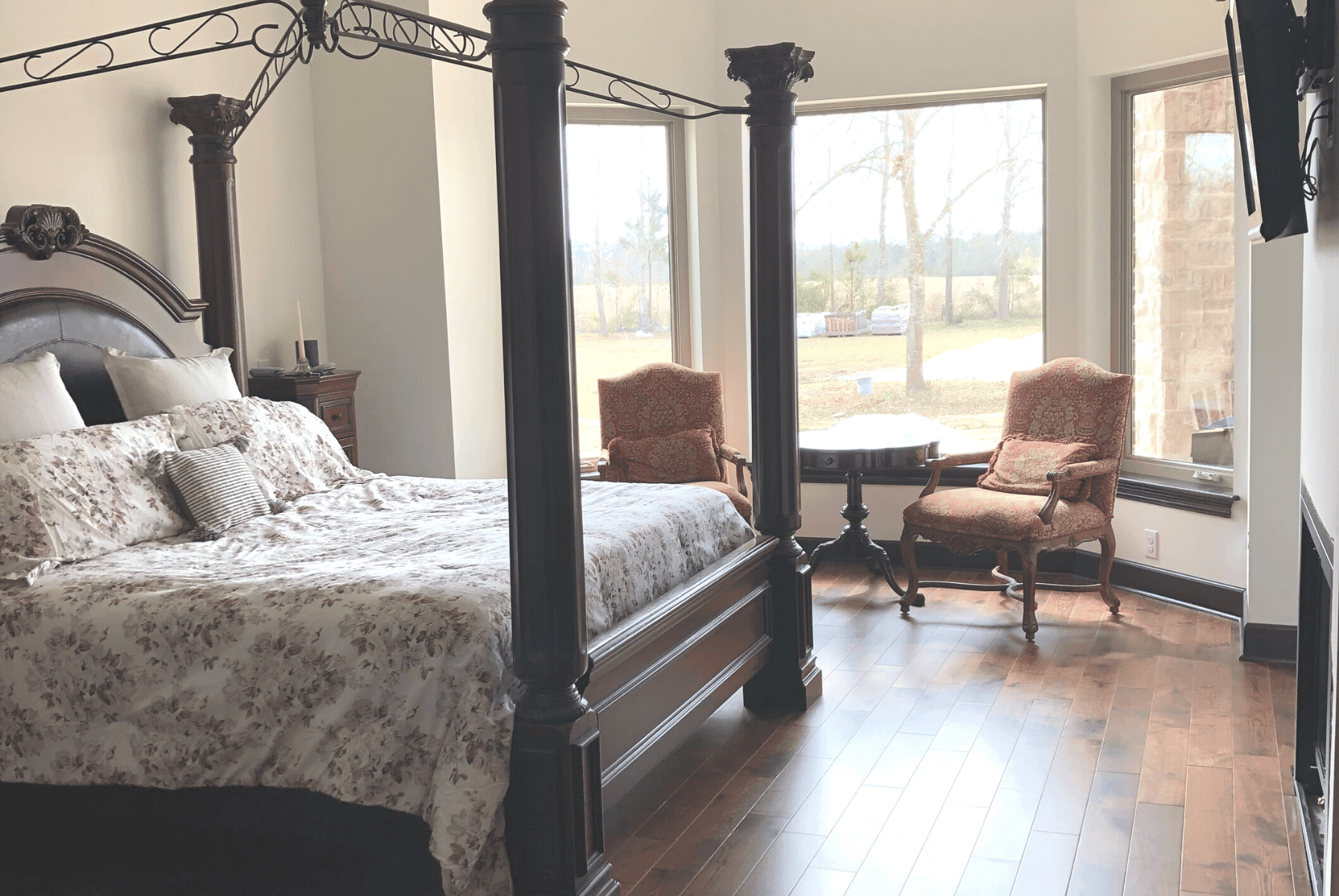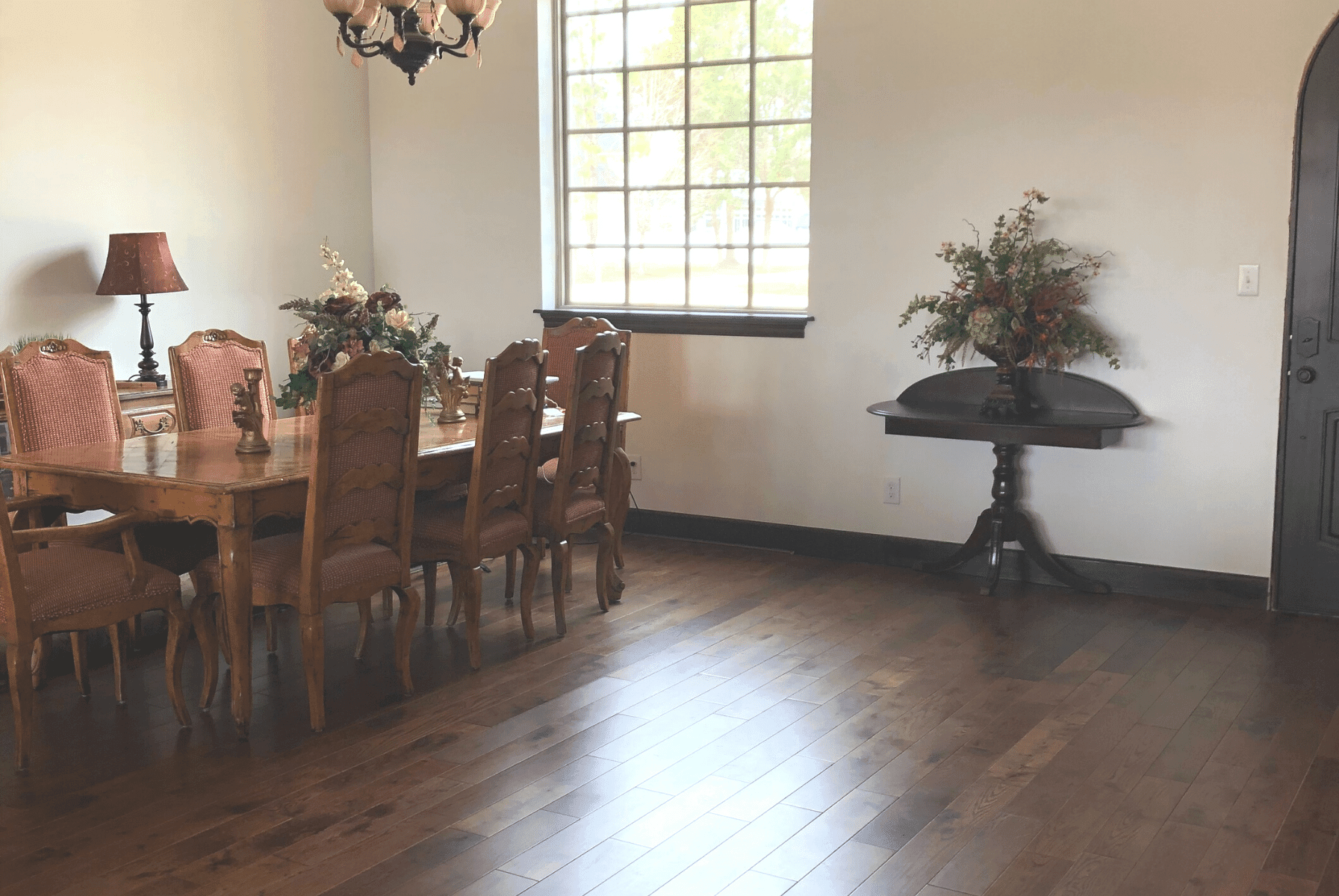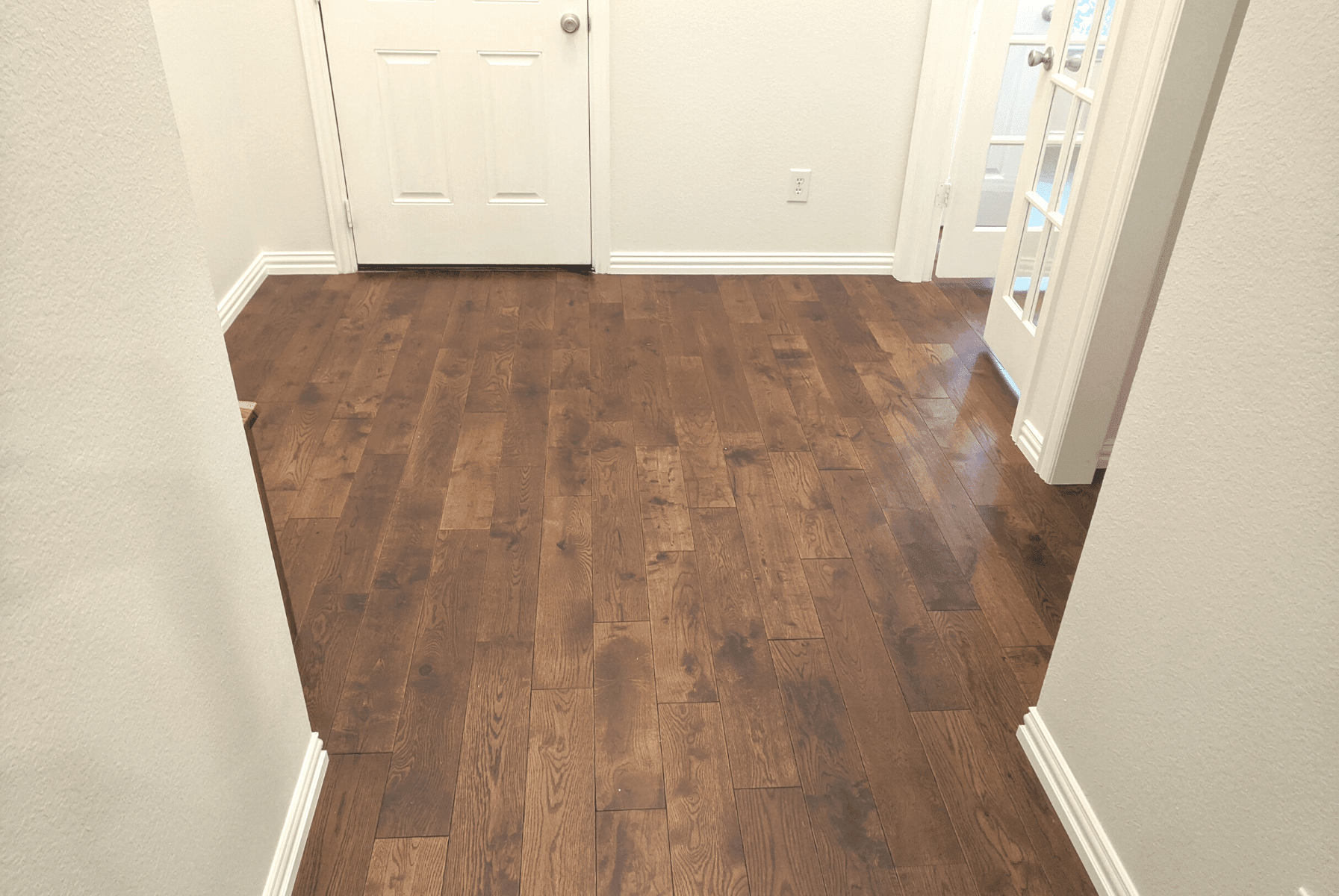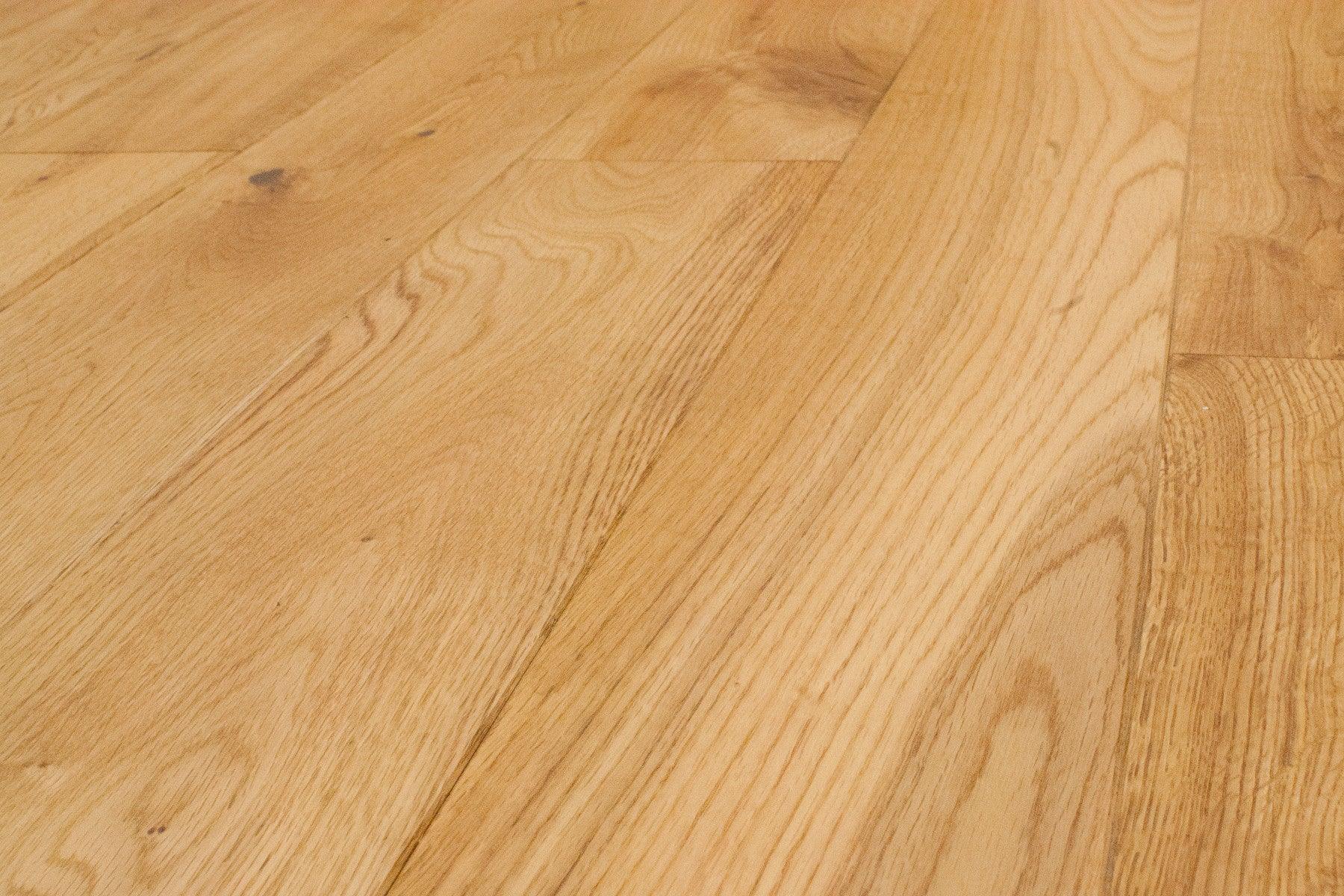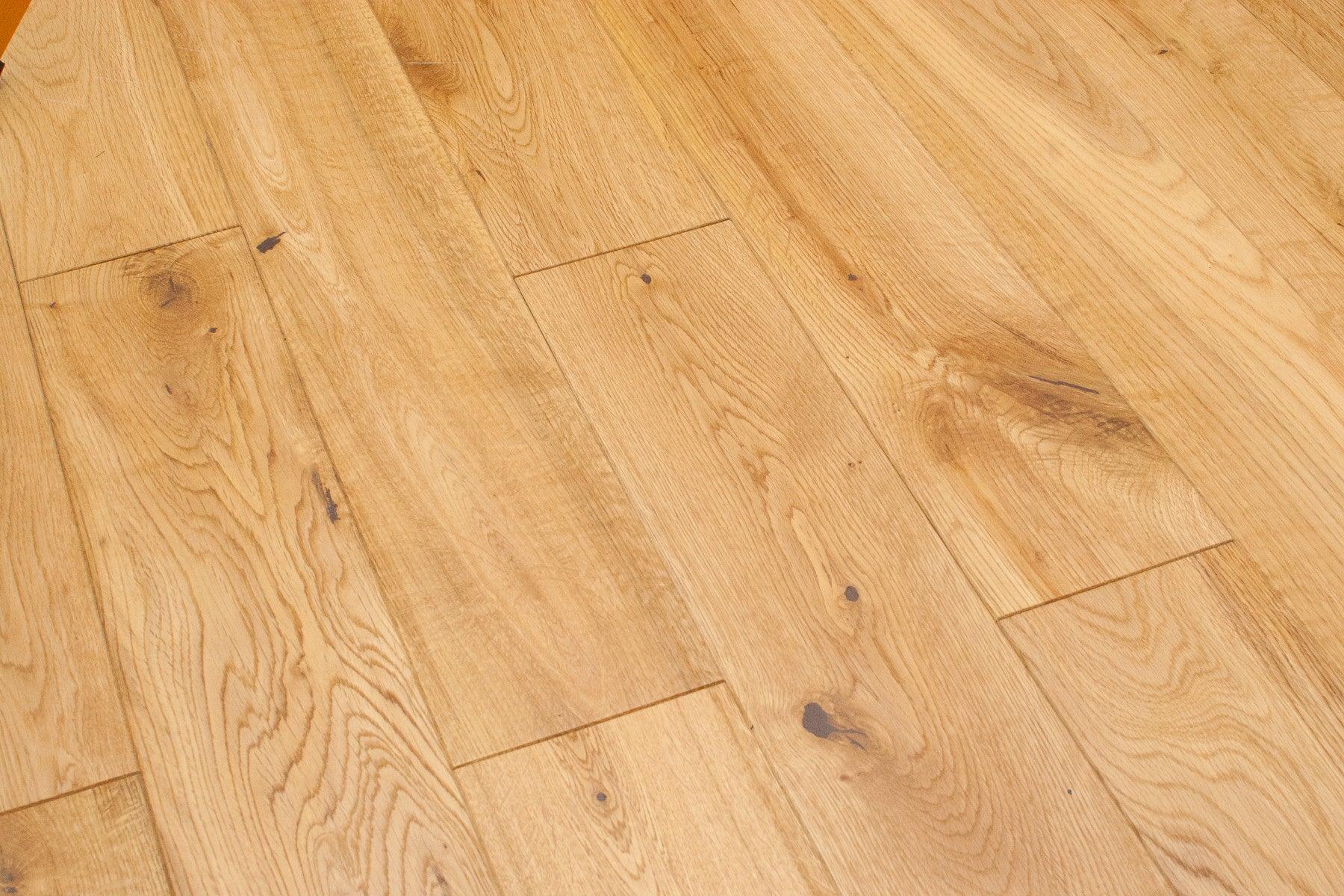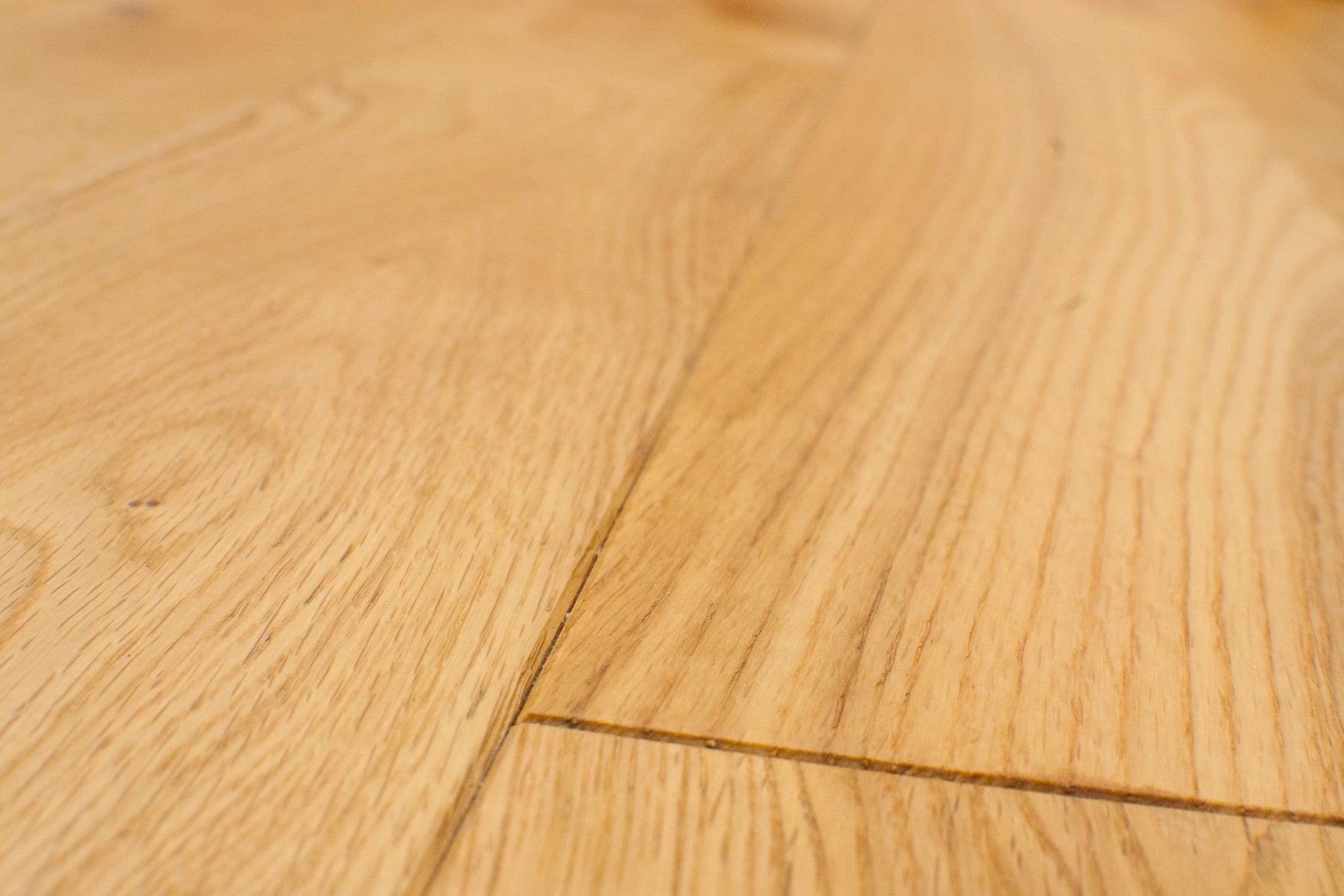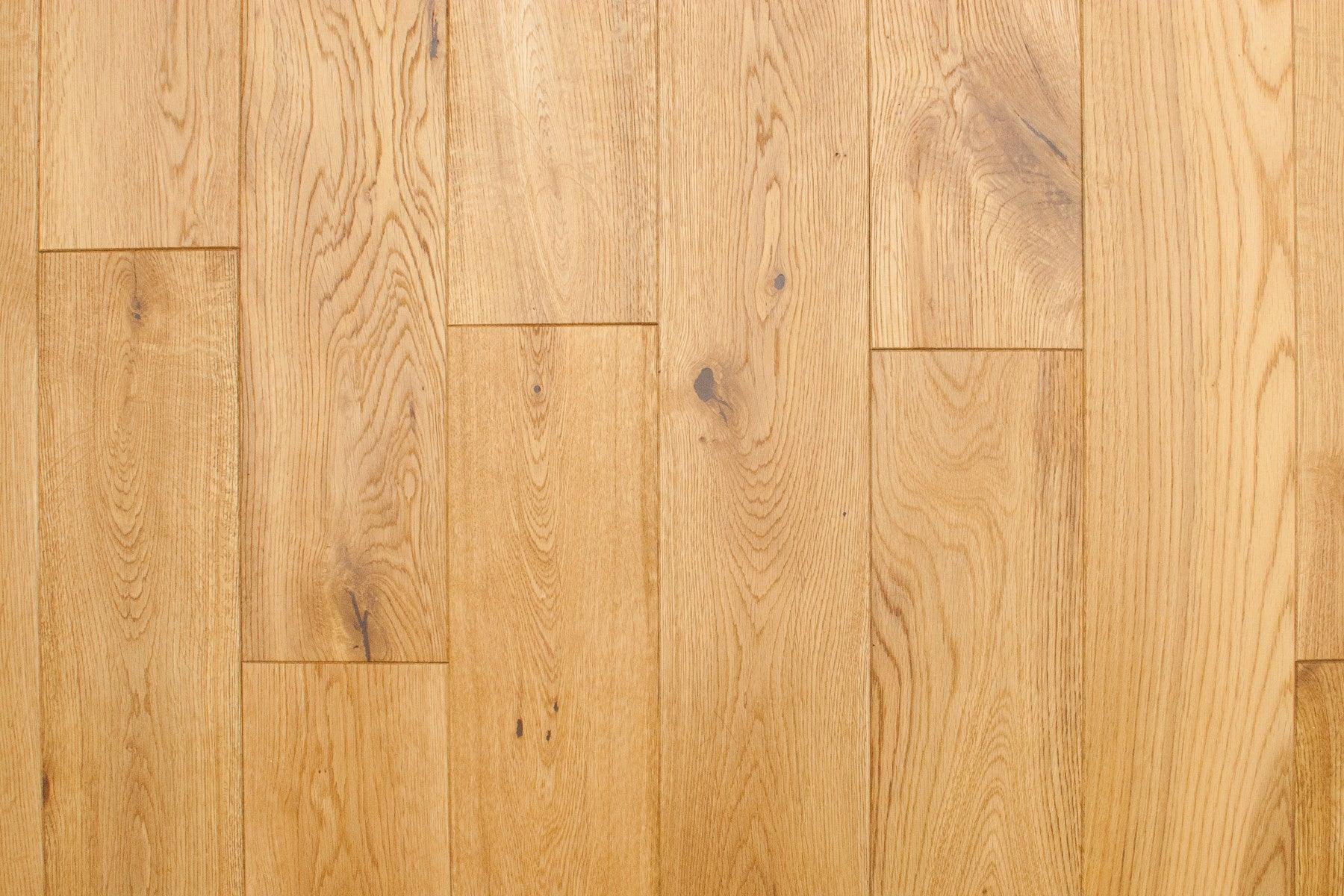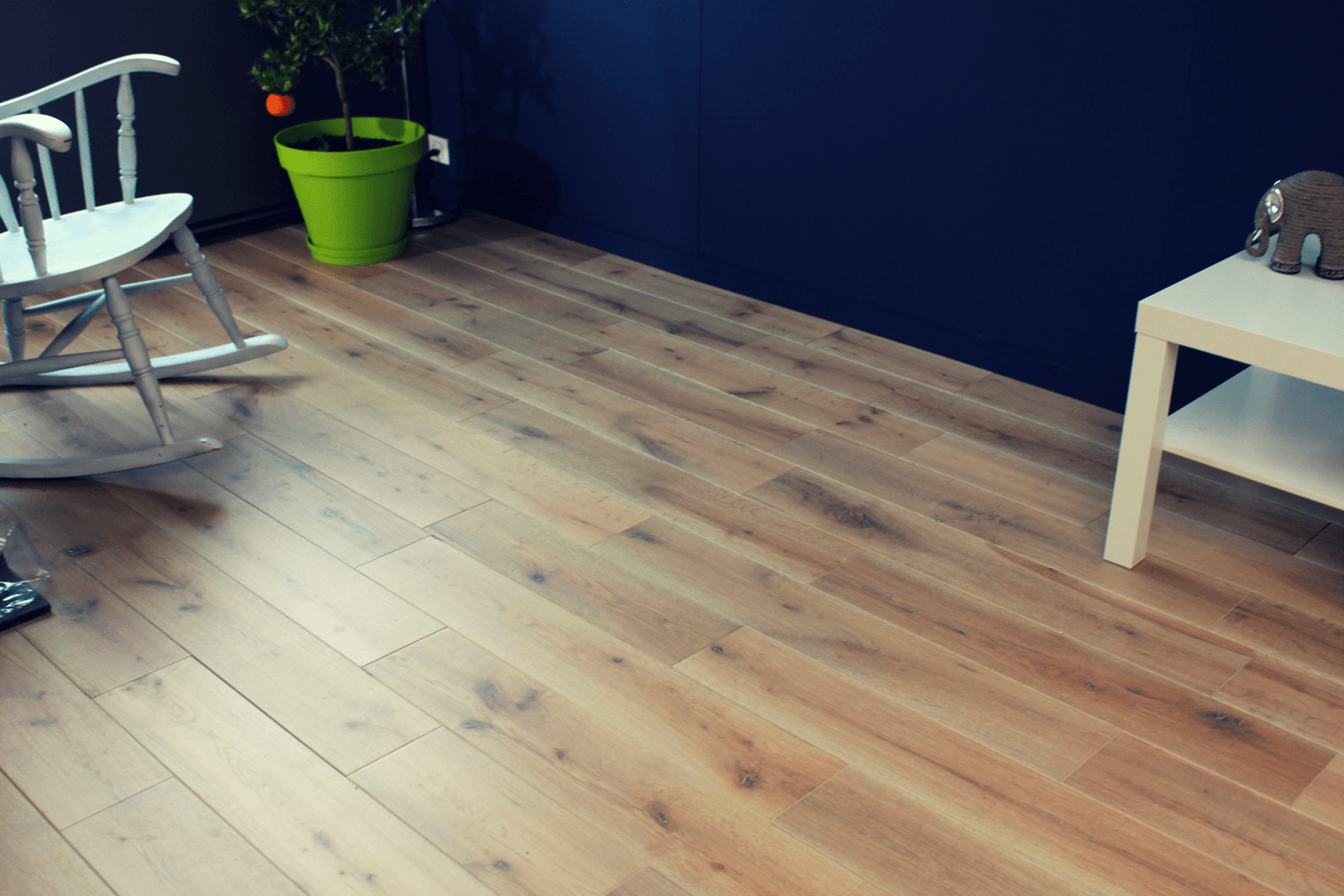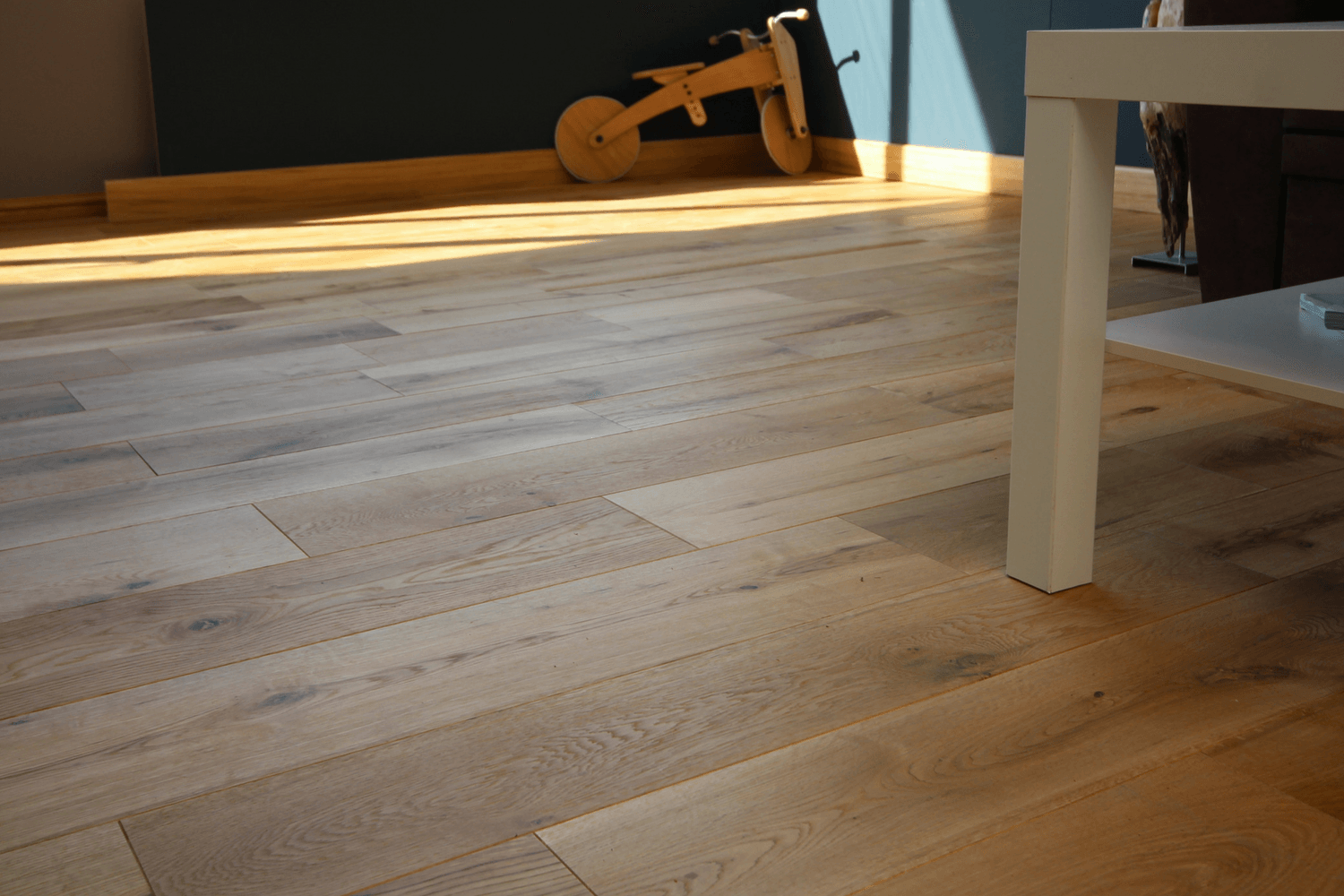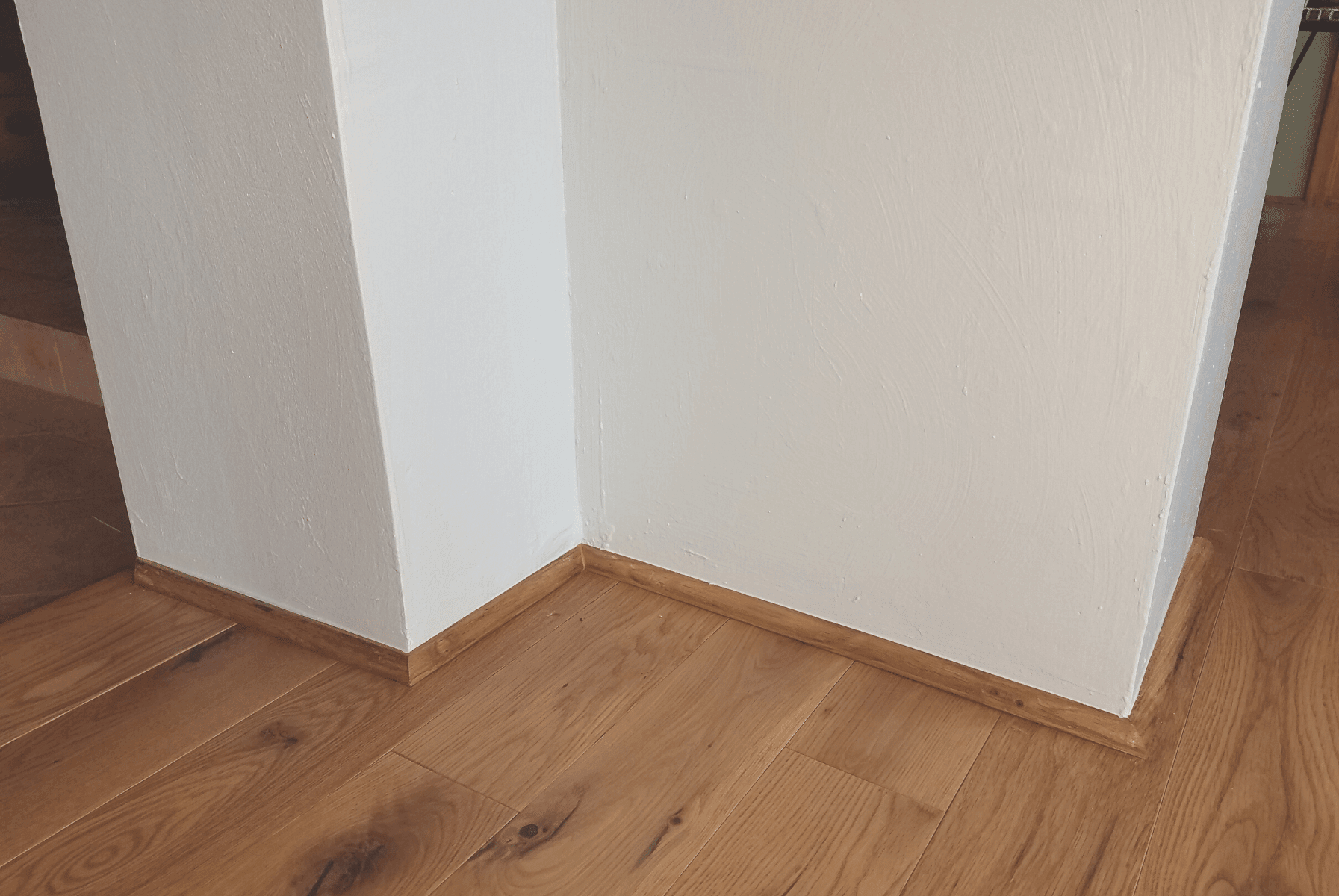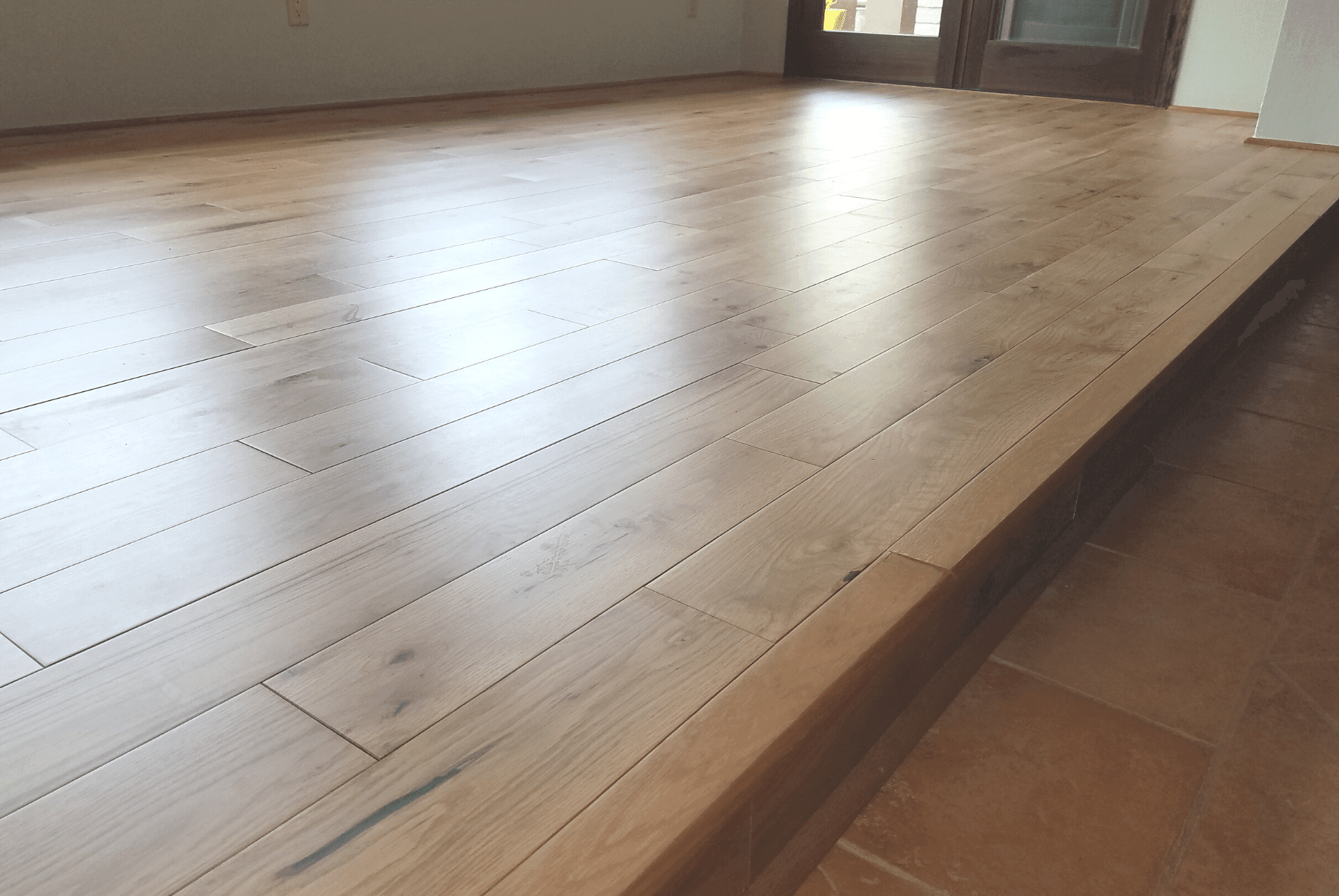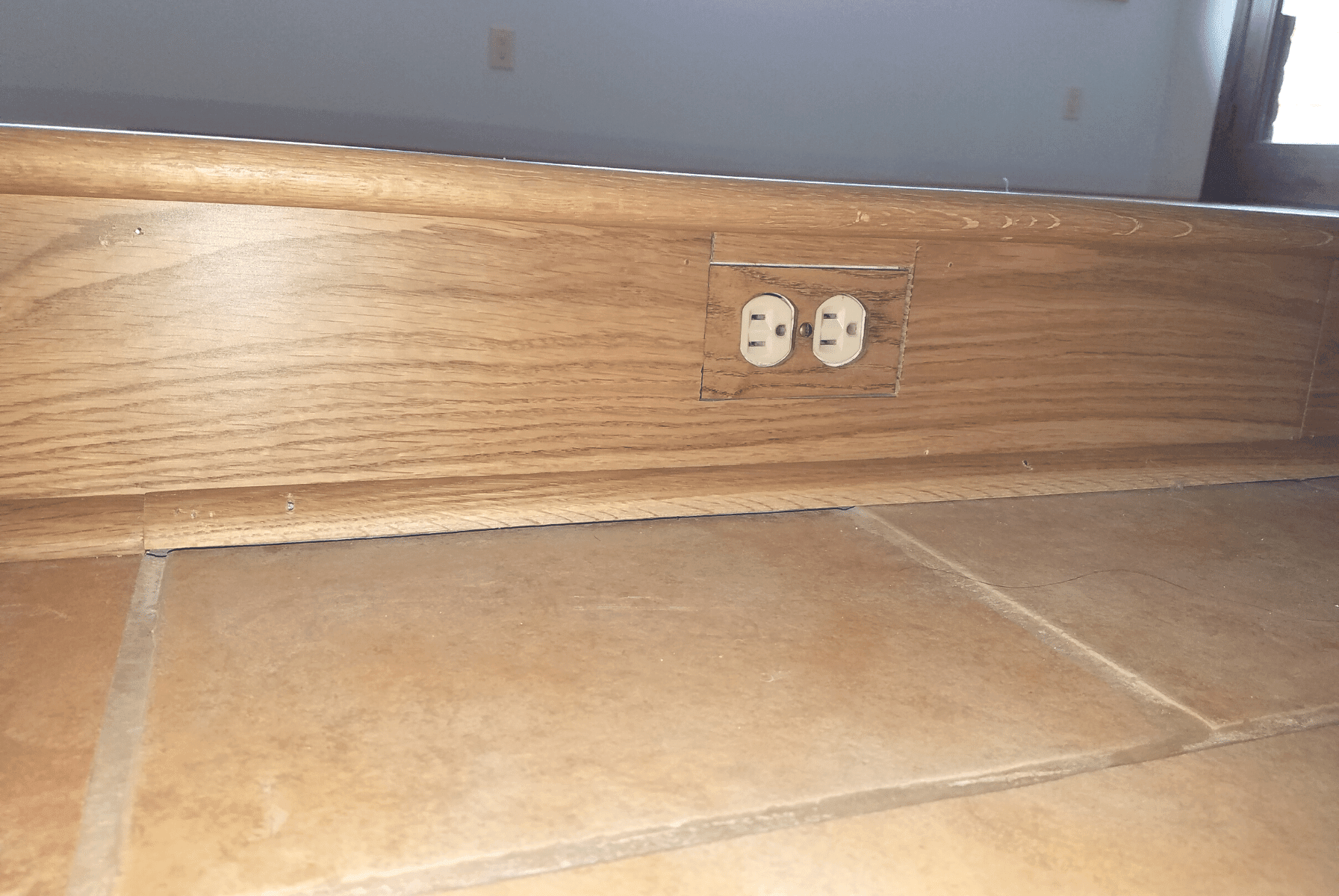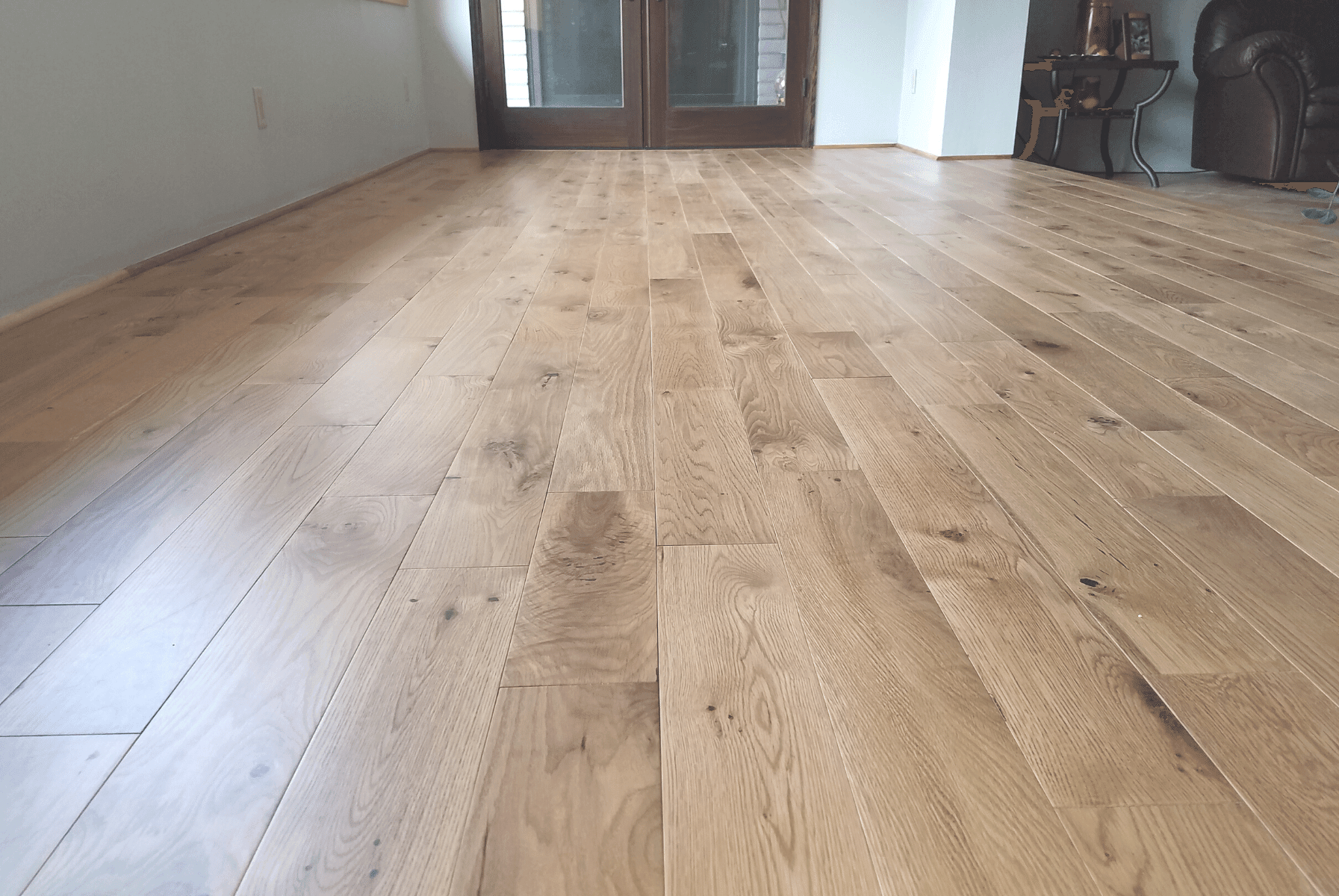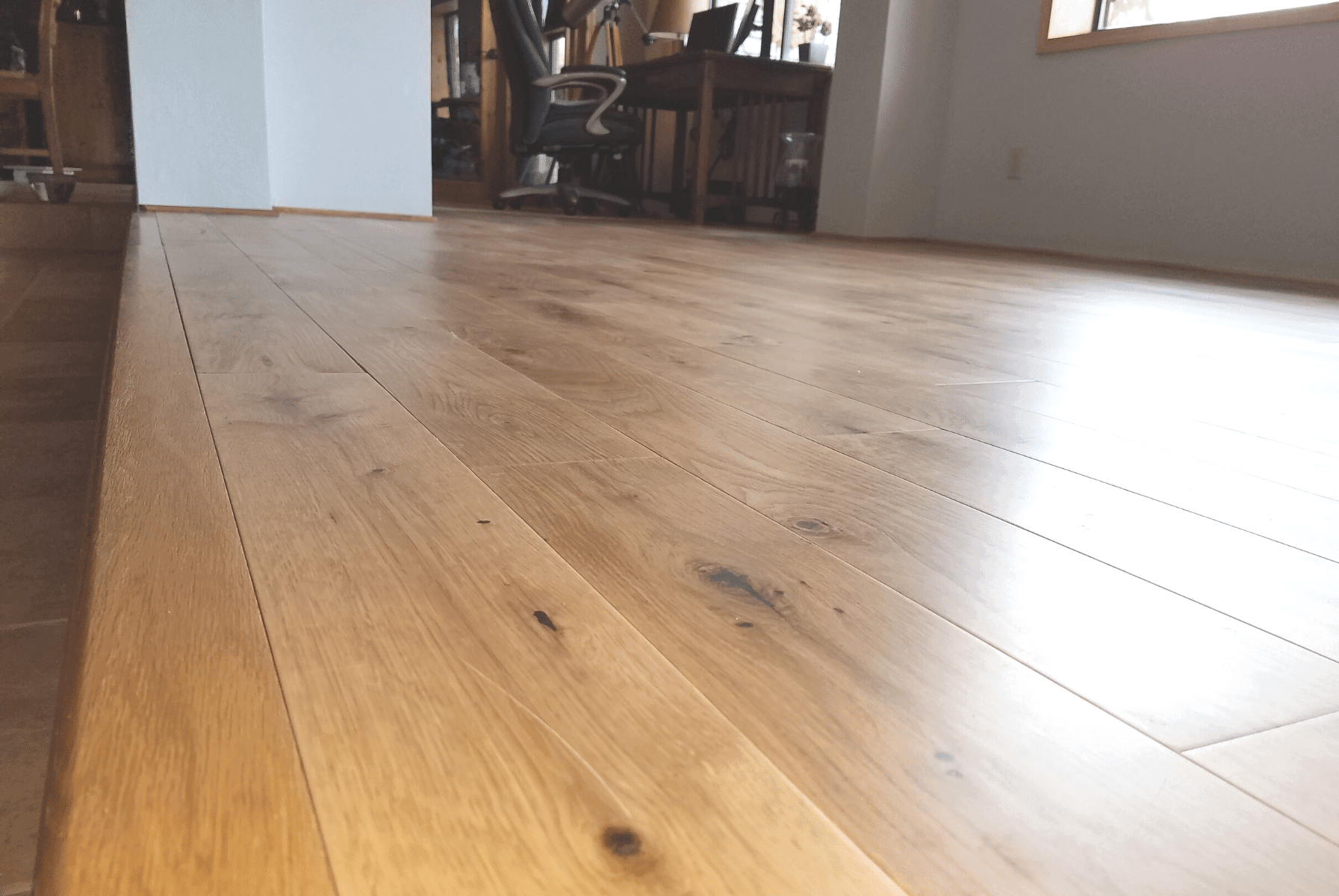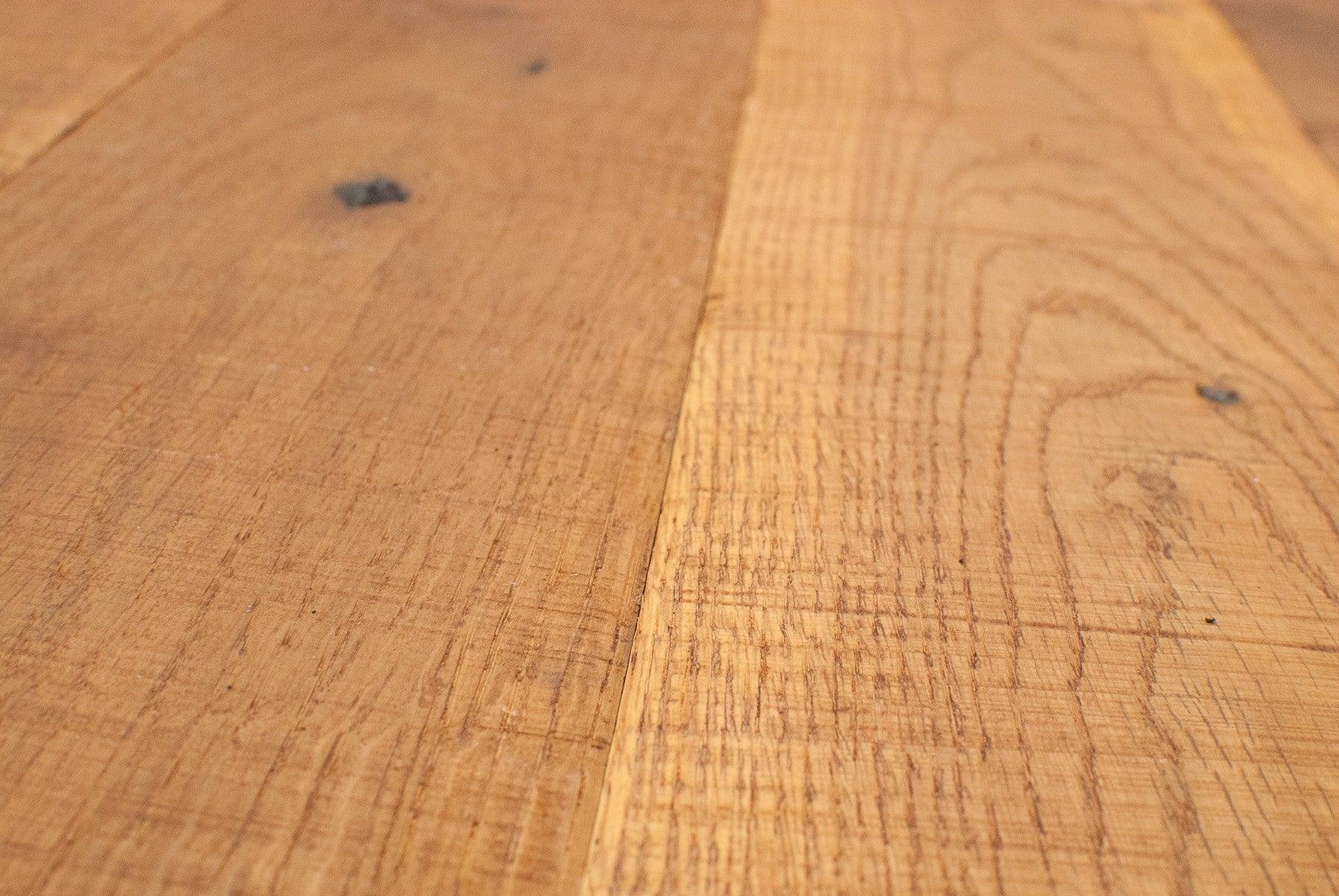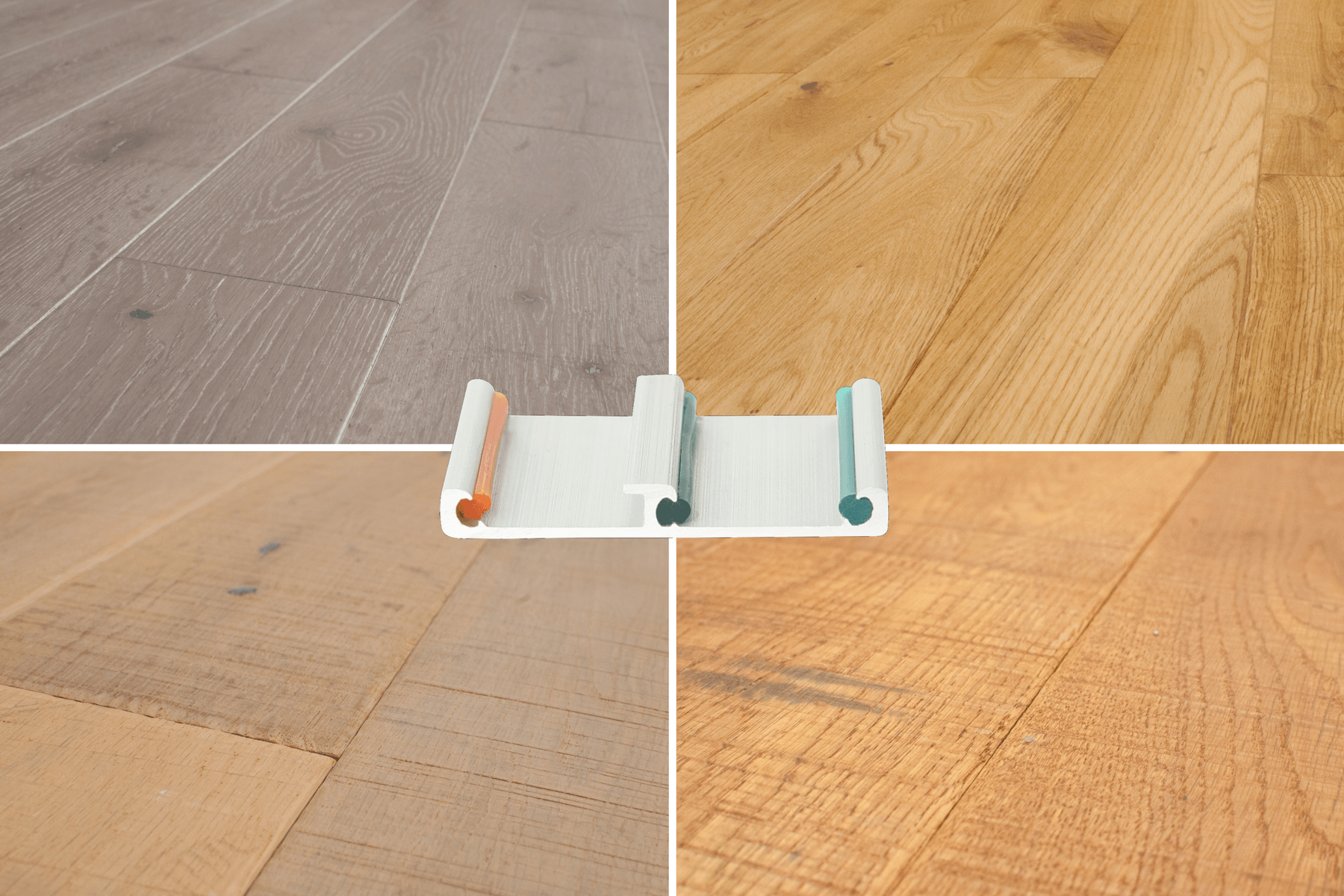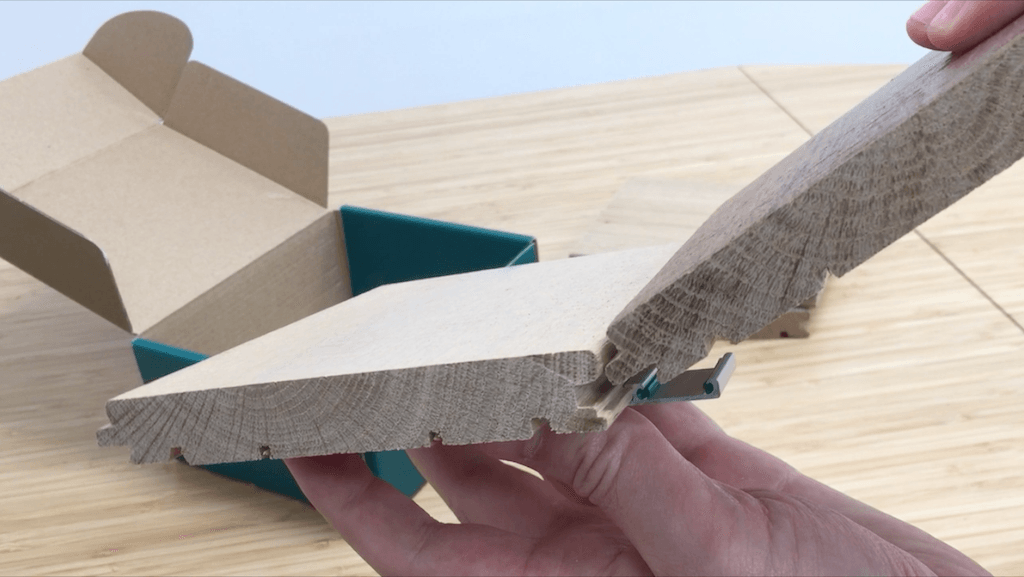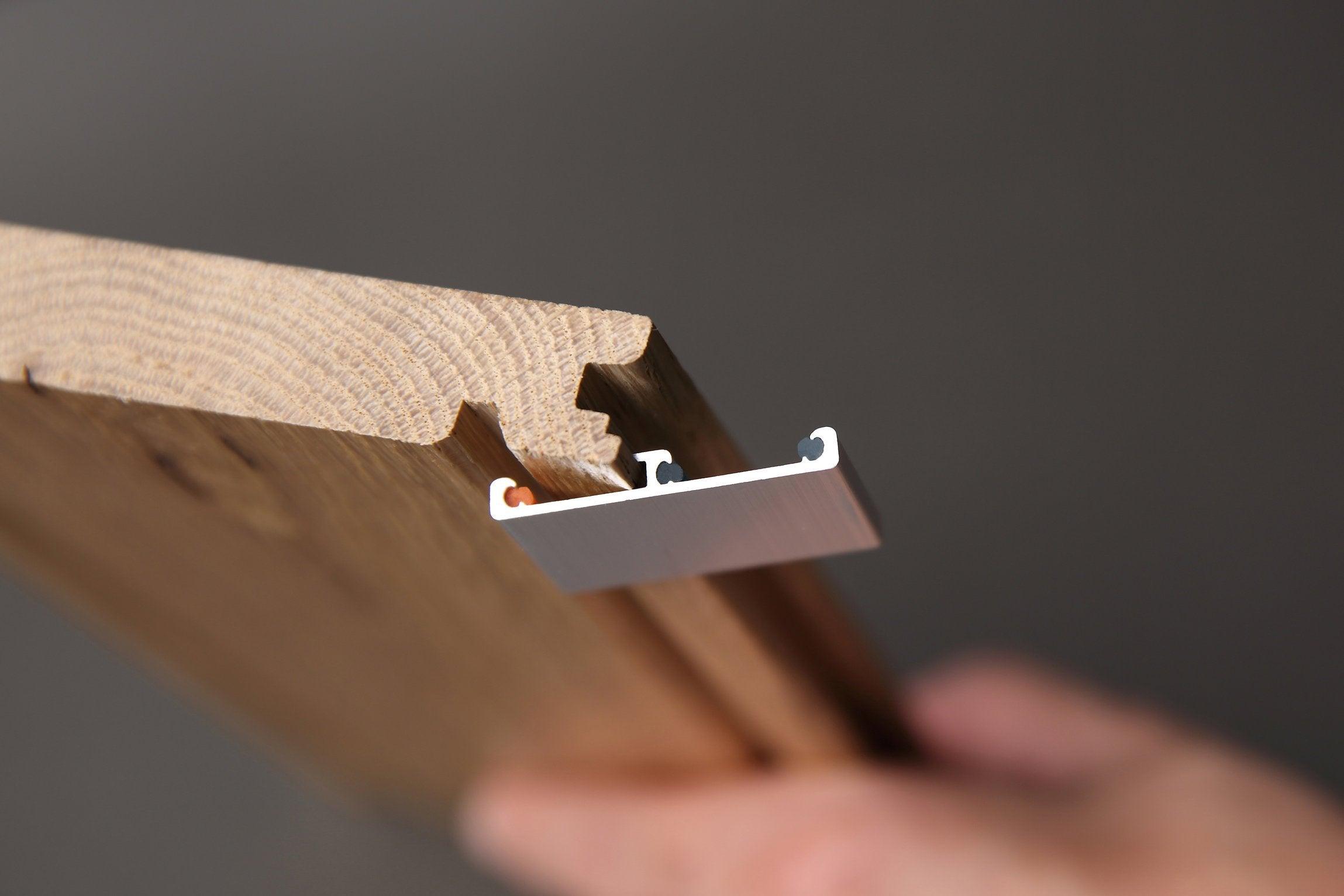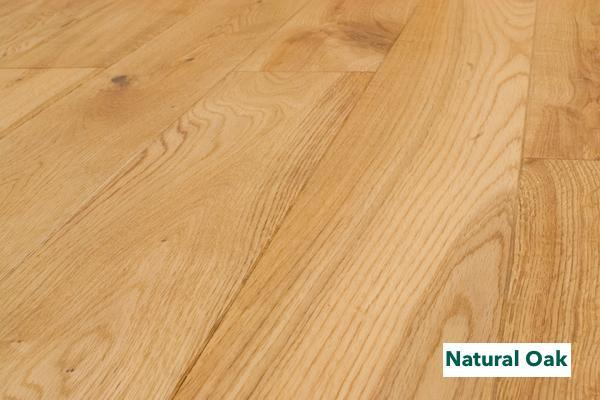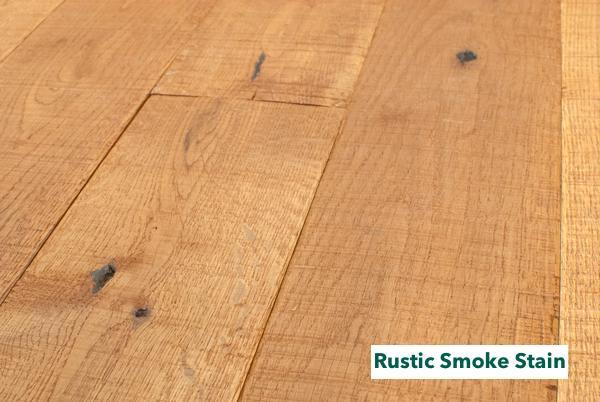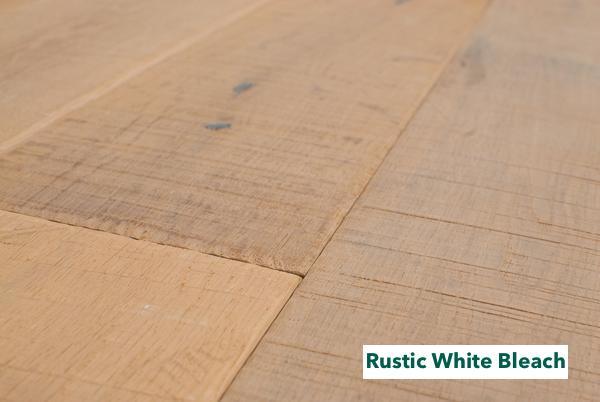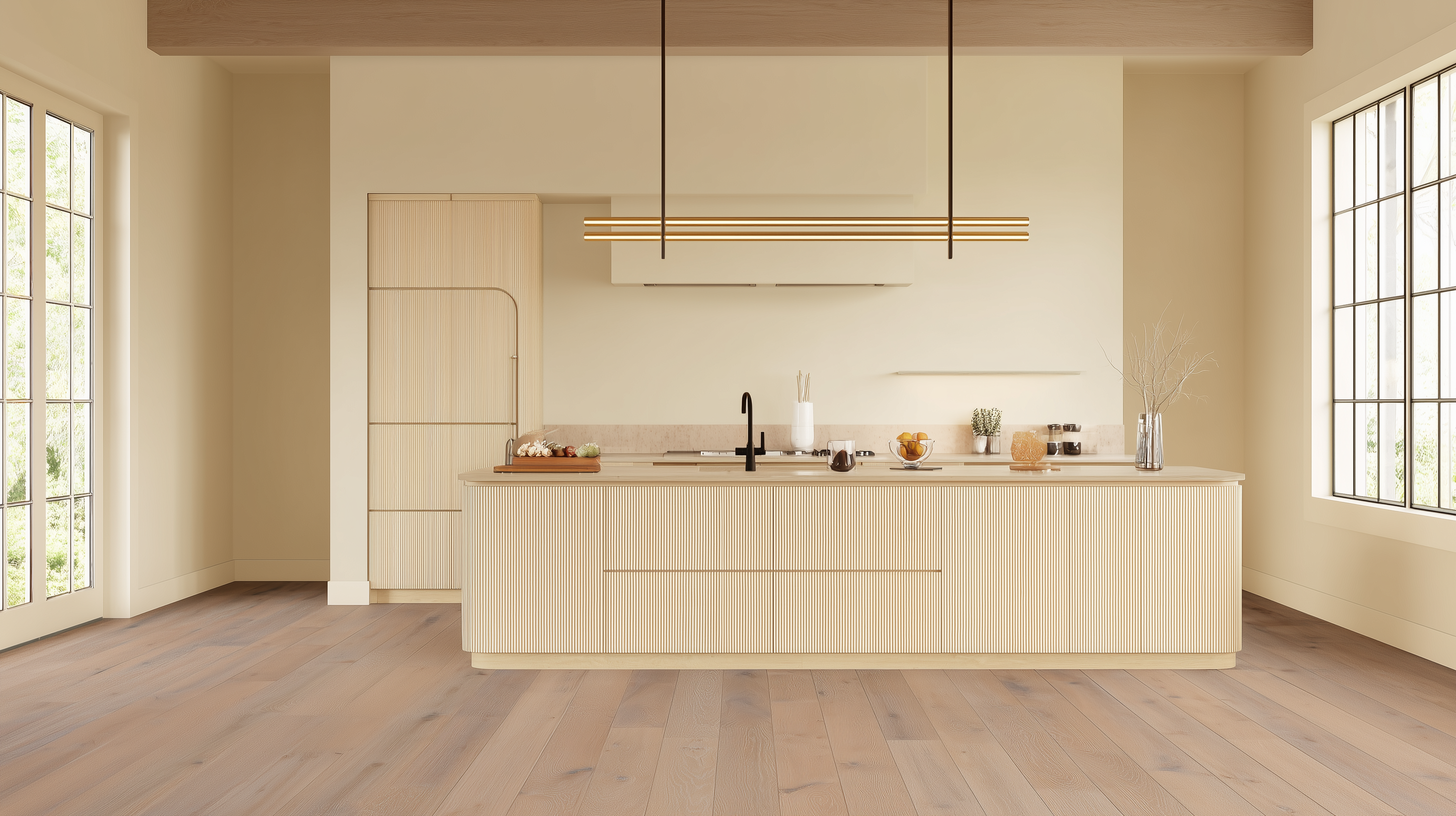Coastal homes have a rhythm all their own: bright light, ocean air, and a natural sense of ease. But along with the charm comes a quiet challenge: humidity, salt, and shifting temperatures that test every surface from the ground up. Nowhere is that more evident than in your floors.
The best flooring for coastal homes blends natural warmth with true resilience. It stands up to moisture while enhancing the calm, airy feeling that defines seaside living. According to NOAA Climate Data, average humidity along U.S. coastlines often stays between 70 and 85 percent year-round, a level that can stress even the most durable finishes. That’s why careful material selection and smart transitions between them matter more than ever.
Easiklip flooring offers a natural solution. Made from solid European oak and installed using a patented floating clip system, it delivers the authenticity of real hardwood with the stability coastal climates demand. No glue. No nails. Just quiet, breathable craftsmanship designed for changing conditions.
Whether you’re pairing oak with porcelain, bamboo with stone, or tile with wood, thoughtful floor transition ideas create the difference between a space that feels connected and one that doesn’t. From engineered wood to Easiklip’s solid oak, here are the top flooring choices that keep coastal homes beautiful, comfortable, and built to weather every tide.

Engineered Wood: Warmth with Stability in Coastal Climates
Engineered hardwood offers the look of solid wood with better tolerance for humidity and temperature changes, making it one of the best flooring choices for coastal homes. Each board is built with a real wood veneer over layered plywood, which reduces expansion and contraction from salt air and shifting moisture.
According to the National Wood Flooring Association (NWFA), engineered hardwood performs especially well in regions with high humidity thanks to its cross-ply construction that helps stabilize each plank (NWFA Technical Guidelines). This makes it ideal for beachfront houses, where conditions can fluctuate daily.
For homeowners who prefer the authenticity of solid wood, Easiklip flooring provides a smart alternative. Its floating clip system allows solid European oak to move naturally without glue or nails, achieving similar stability to engineered flooring but with the longevity of true hardwood.
In high-traffic areas like kitchens or mudrooms, plan clean wood to tile transitions to protect the edges and keep surfaces easy to clean. The floating system also simplifies future refinishing or replacement if salt and sand wear down the finish.
Design Tip: Choose matte or low-sheen finishes to disguise salt deposits and fine grains of sand.

Luxury Vinyl Plank: Waterproof Practicality
Luxury vinyl plank has become a coastal staple for good reason. It is waterproof, easy to maintain, and convincingly mimics the grain and tone of real wood. Modern rigid core constructions such as SPC and WPC resist telegraphing from minor subfloor imperfections, while thick wear layers protect against scratches from sand. Routine care is simple. A sweep and an occasional damp mop keep surfaces looking fresh.
Market data reflects the appeal. Floor Covering Weekly reports that LVT accounted for about 27.6 percent of total U.S. floor covering dollar sales in 2023 and more than 30 percent by square footage. Even in a soft market, LVT continued to take share as rigid core products matured and installation improved. FCNews’ 2024 and 2025 updates similarly note that resilient remains a large category by revenue despite recent volume headwinds, underscoring LVP’s staying power in real-world projects where moisture is a concern.
Performance has limits. LVP cannot fully match the tactile warmth and depth of true wood underfoot. Homeowners looking for a more natural feel often reserve LVP for high exposure zones such as entries, mudrooms, and laundry, then carry Easiklip hardwood through living areas for richness and longevity. Use refined floor transition ideas to keep floor transitions smooth, safe, and visually quiet.
Specification Tips for the Coast
Choose a rigid core with a quality wear layer. Look for products with robust locking profiles and laboratory-tested scratch resistance. Consider UV stability near windows to reduce fading. Entry mats and regular sweeping minimise sand abrasion and extend finish life.
Design Tip:
Select light coastal tones such as driftwood, sand, or bleached oak to amplify natural light and keep interiors airy while complementing neighbouring Easiklip flooring in adjacent rooms.

Tile and Stone: Classic Coastal Durability
Tile and stone are longtime favorites in coastal homes for good reason. They’re naturally resistant to salt, sand, and moisture, ideal for high-exposure areas like kitchens, entryways, and sunrooms. Porcelain tile, in particular, is celebrated for its water resistance and durability, while natural stone like travertine or limestone brings texture and a grounded, coastal character.
According to Better Homes & Gardens, porcelain remains one of the top flooring choices for humid climates because it “resists moisture absorption, fading, and salt corrosion”.
The design challenge is warmth underfoot and visual flow. Pair cool tile with real wood to balance tone and texture. Easiklip flooring integrates cleanly with stone or porcelain, especially when you plan a precise hardwood-to-tile transition that keeps edges neat, sand-free, and trip-free.
Practical Tips for Coastal Performance
• Choose porcelain with a PEI rating appropriate for heavy foot traffic in entries and kitchens
• For safety, check slip resistance values and select textures that perform well when wet
• In bright seaside light, matte finishes soften glare and hide salt residue better than high gloss
• Use epoxy or stain resistant grout in light tones to reduce maintenance and discolouration
• For natural stone, specify a breathable penetrating sealer and reapply on schedule to resist salt and spills
• Plan for larger format tiles with proper movement joints so temperature swings do not stress the field
• If you are adding radiant heat, confirm tile and setting materials are rated for thermal cycling
Design Tip
In open coastal plans, carry porcelain through high exposure zones and transition to Easiklip oak in living areas for warmth. Keep the transition flush and colour aligned so light reads as one continuous plane from kitchen to lounge.

Bamboo: Renewable Strength for Humid Air
Bamboo is an increasingly popular flooring material for coastal homes thanks to its sustainability and strength. Strand-woven bamboo, in particular, is engineered under extreme pressure, creating a floor that’s harder than many traditional hardwoods and resistant to coastal humidity.
Green Building Advisor highlights that bamboo flooring performs well in variable climates because of its dense fibre structure and fast renewability, making it an eco-conscious choice.
That said, bamboo can still expand slightly with moisture changes, so installation and acclimation are key. When connecting bamboo with hardwood or tile, use the best wood filler for hardwood floors to refine seams and create a polished, cohesive finish.
Design Tip: For a true coastal look, opt for light, sun-washed bamboo tones that echo driftwood or sand, pairing beautifully with neutral textiles and airy spaces.
Design Details That Make Coastal Floors Last
In coastal homes, longevity comes from careful planning and smart materials. Salt air, humidity, and sand wear down even the most durable floors, so every layer, from underlayment to finish, should be chosen with intention.
Start at the foundation. A moisture barrier or premium underlayment is your first defense against humidity creeping up from the subfloor. A good layer improves comfort, sound absorption, and moisture resistance, especially vital in oceanfront or lakeside homes. See The Best Underlayment for Hardwood Floors: Comfort, Sound, and Moisture Protection for guidance on what to use under Easiklip hardwood in coastal environments.
Pay attention to transitions. Where wood meets tile or stone, precise detailing protects edges and keeps sand out of seams. Explore Floor Transition Strips & All Your Options for Wood Floor Transitions for design solutions that maintain flow while preventing damage in high-traffic areas.
If you’re leveling subfloors or dealing with uneven foundations, common in older beach homes, How to Use Floor Shims to Level a Wood Subfloor and Remove Squeaky Floors offers practical advice on achieving a stable, noise-free base before installation.
Once your foundation is secure, focus on finishing and sealing. Use a breathable, low-sheen finish that resists salt marks and glare from ocean light. Close micro gaps before sealing with How to Choose the Best Wood Filler for Hardwood Floors to block moisture and maintain a polished surface.
For wet areas like entryways or bathrooms, protect your installation further with knowledge from Is It OK to Put Hardwood Floors in the Kitchen?, a guide that explains how to balance design with function in moisture-prone spaces.
Maintenance matters too. Use entry mats to trap grit, sweep often, and mop sparingly with a damp cloth. Reapply sealers periodically, especially if your home faces direct sea spray. For a sustainable and easy-care finish option, Pure Tung Oil for Hardwood Floors explores an eco-friendly way to keep natural wood hydrated and resilient in salty air.
Finally, manage your environment. Keep indoor humidity between 35% and 55%, run HVAC or dehumidifiers year-round, and allow natural expansion around room perimeters. By layering smart underlayment, refined transitions, proper finishes, and steady humidity control, your coastal hardwood floor won’t just survive the climate; it will age beautifully with it.
Style That Outlasts the Tide
Coastal homes deserve flooring that can weather the elements while maintaining timeless beauty. Engineered wood, tile, bamboo, and vinyl all perform well, but Easiklip hardwood flooring stands apart for homeowners who want genuine solid oak that handles humidity with ease.
Easiklip’s floating clip system eliminates the need for glue or nails, allowing the wood to expand and contract naturally with changing coastal conditions. The result is a stable, quiet, and elegant floor built for long-term performance.
“Coastal flooring is all about managing moisture before it manages you,” says Brett Miller, VP of Technical Standards at the NWFA.
Bring the calm beauty of the coast indoors.
-
Browse Easiklip collections
-
Order a sample pack
With real oak, clean lines, and materials made to move with the ocean’s rhythm, Easiklip turns coastal flooring into lasting design.
